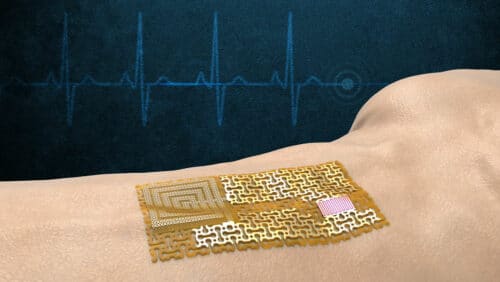Devices can sense and transmit wireless signals similar to pulses, sweat, and UV exposure without chips or batteries.

MIT engineers have designed a new wearable sensor that can transmit signals wirelessly without any battery or chip. The design is a flexible semiconducting film in the form of an electronic skin. This skin can be stuck to the surface (human body) like a regular Scotch tape. The heart of the sensor is made up of an ultrathin, high-quality gallium nitride film. This material has a piezoelectric property which enables it to both produce electrical signals during a mechanical strain and to vibrate in response to an electric impulse.
The team has produced single-crystalline samples of gallium nitride and paired it with a layer of gold to boost the electrical signal. The device was sensitive to vibrate in response to heartbeat, salt in their sweat and the vibration generated electrical signal that could be read by a receiver.
“Chips require a lot of power, but our device could make a system very light without having any chips that are power-hungry,” says the study’s corresponding author, Jeehwan Kim.
“You could put it on your body like a bandage, and paired with a wireless reader on your cellphone, you could wirelessly monitor your pulse, sweat, and other biological signals.”
In the new study the team tried to peel away ultrathin single-crystalline films of gallium nitride to increase the piezoelectric property. Then this pure form of gallium nitride is used as both a sensor and a wireless communicator. The pattern of waves from the vibration can help with identifying the material and the compounds present in the body.
“If there is any change in the pulse, or chemicals in sweat, or even ultraviolet exposure to skin, all of this activity can change the pattern of surface acoustic waves on the gallium nitride film,” notes Yeongin Kim. “And the sensitivity of our film is so high that it can detect these changes.”







